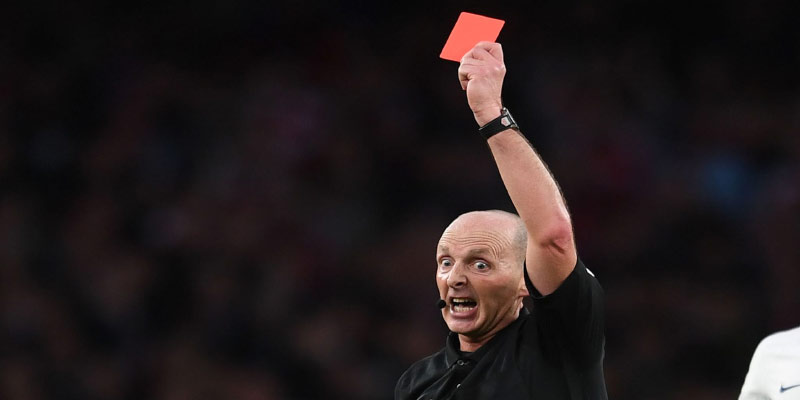A red card is more than just a punishment—it’s a game-changer. In football, this powerful decision can shift momentum, strategies, and player dynamics. Whether it’s a reckless foul or unsportsmanlike conduct, the red card plays a pivotal role in determining the outcome of a match. At 77BET APP, we dive into the history, significance, and lasting impact of the red card on the beautiful game.
The Impact of a Red Card on a Match
When a player receives a red card, the ramifications resonate deeply within the match, impacting both team tactics and morale. The dynamics shift as teams must recalibrate their strategies to accommodate the loss of a player.
Changes in Team Tactics
The immediate aftermath of a red card leads to significant tactical adjustments that can influence the outcome of the match. Teams often shift formations, opting for more defensive setups to counterbalance the disadvantage of playing with fewer players. This change in tactics aims to minimize vulnerability while still attempting to create scoring opportunities.
For instance, a team that loses a player may transition from a 4-3-3 formation to a more defensive 4-4-1 setup. By sacrificing an attacker, the remaining players can bolster their midfield and defense, increasing their chances of staving off further attacks from the opposition. However, this strategic maneuvering requires excellent communication and coordination among the players, as a breakdown in teamwork can exacerbate vulnerabilities.
Additionally, teams may adopt a more conservative style of play, focusing on possession and structured passing rather than risky offensive maneuvers. The intention is to control the tempo of the game, allowing the team to regroup and weather the storm created by the opponent’s numerical advantage. This shift often leads to a more cautious approach, with players seeking to avoid unnecessary fouls or mistakes that could further jeopardize their chances.
However, the effectiveness of these tactical shifts largely depends on the specific stage of the match. In the closing stages, a team trailing by a goal might opt for a riskier strategy, pushing forward despite the absence of a player. The delicate balance between defensive stability and offensive ambition continues to evolve throughout the match, creating a dynamic and unpredictable atmosphere.
The Effect of a Red Card on Team Morale and Motivation
The psychological effects of receiving a red card extend beyond the tactical adjustments; they permeate team morale and motivation. Playing with a numerical disadvantage can strain relationships among players, as each individual grapples with the challenge of adapting to the loss of a teammate.
There is an undeniable sense of pressure that accompanies being down a player. Teammates may feel the weight of expectation to compensate for the loss, which can lead to anxiety and self-doubt. This psychological burden can manifest in lapses in concentration, missed opportunities, and even increased tensions among players as frustration mounts.
Conversely, the challenge of overcoming adversity may also inspire some teams. A red card can catalyze a rallying effect, prompting players to dig deep and unite in their efforts to hold off the opposing team. This phenomenon often occurs in closely contested matches, where the emotionally charged atmosphere fuels a determination to prove critics wrong.
Ultimately, the impact of a red card on team morale varies based on factors such as leadership, camaraderie, and the overall mental resilience of the squad. Strong teams with effective leaders may harness the situation as an opportunity for growth and collective strength, while others may falter under the weight of the moment.
Conclusion
The intriguing world of football is rich with complex narratives, and the red card serves as a pivotal chapter in many of these stories. From its origins as a disciplinary tool to its multifaceted implications on the field, the red card embodies the essence of the sport—passion, intensity, and the fine line between triumph and tragedy.
